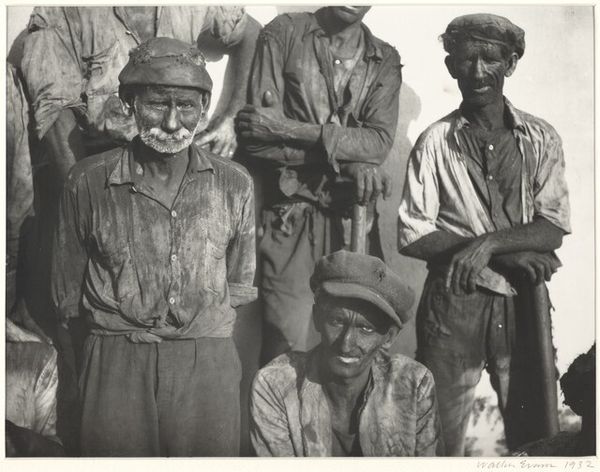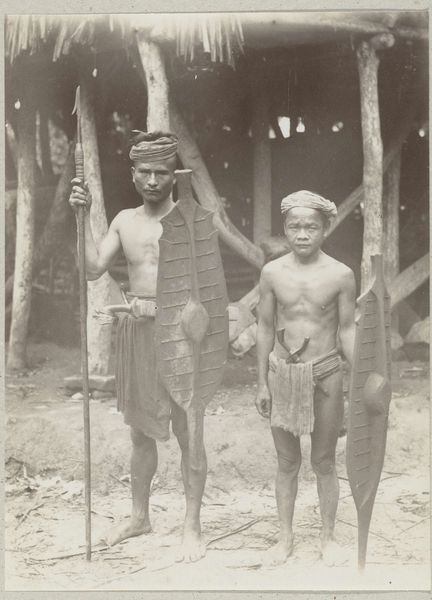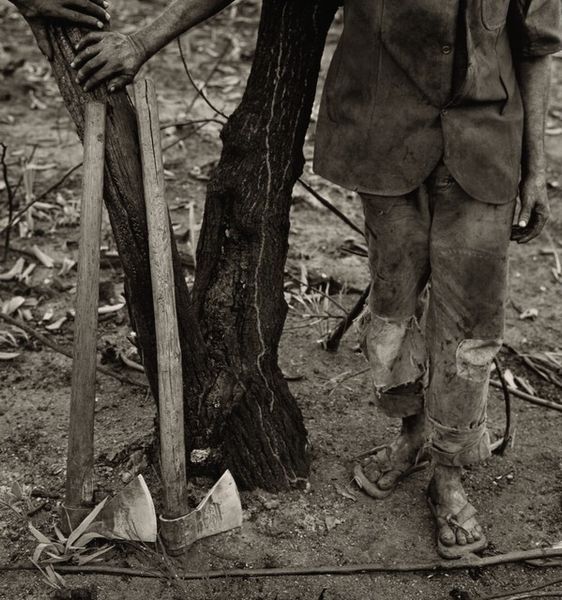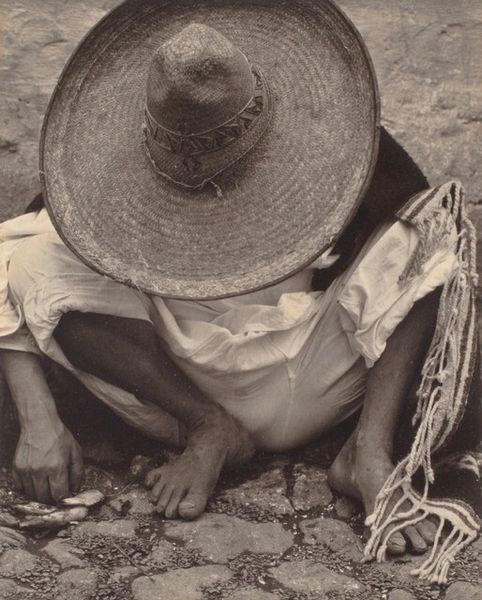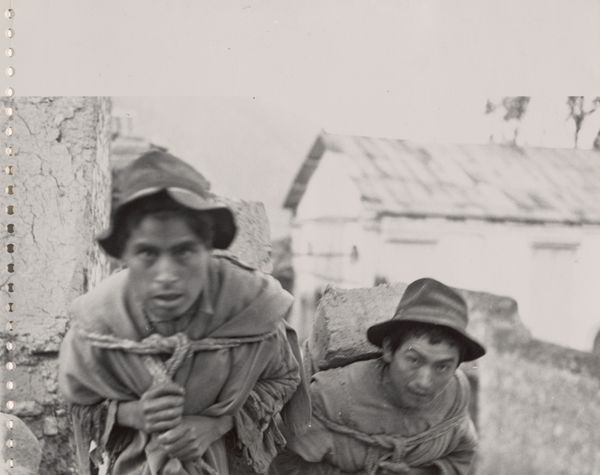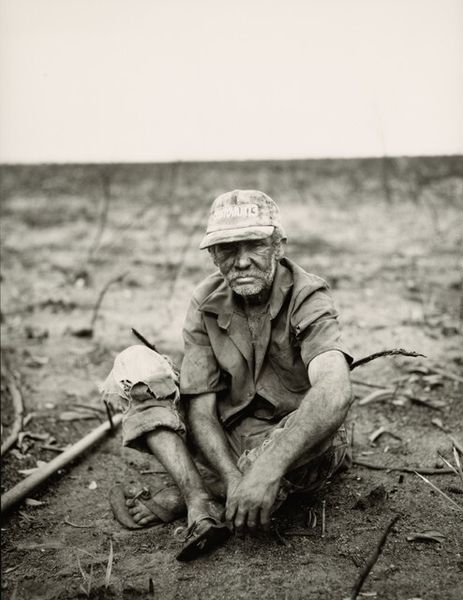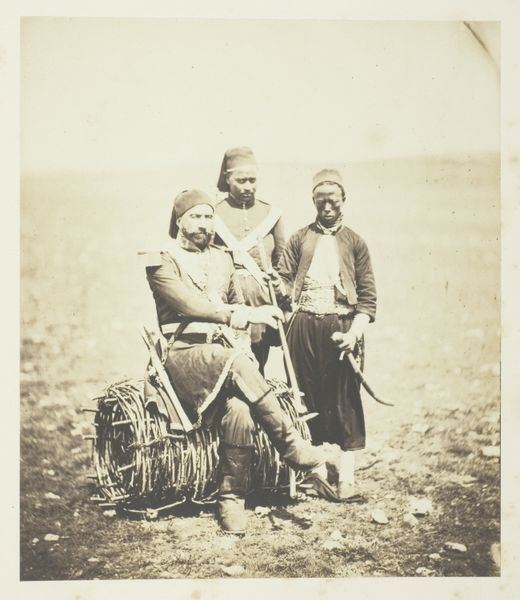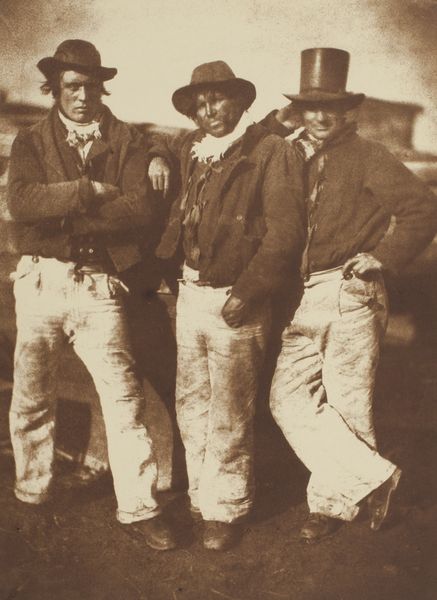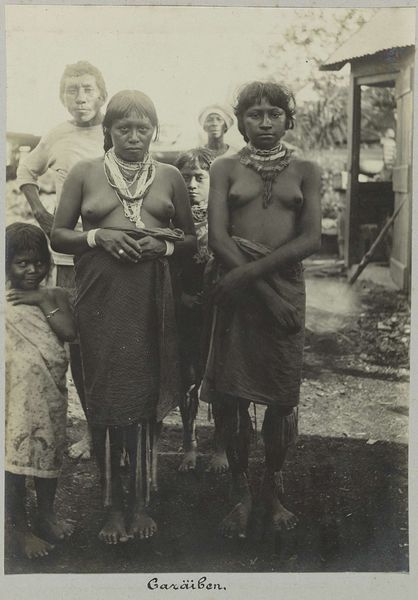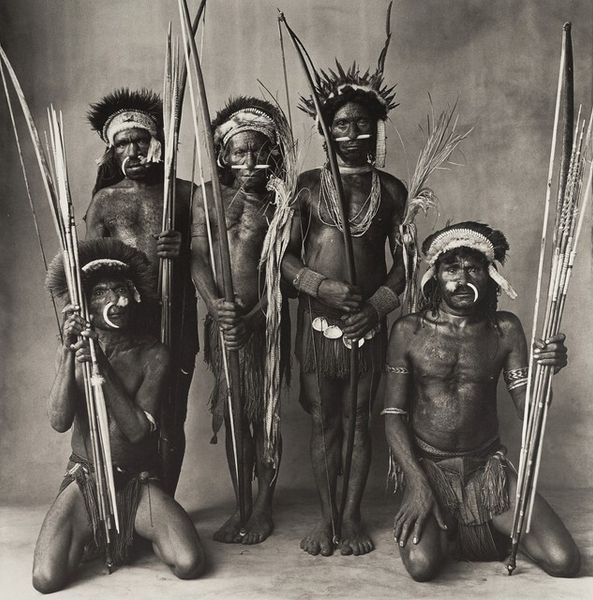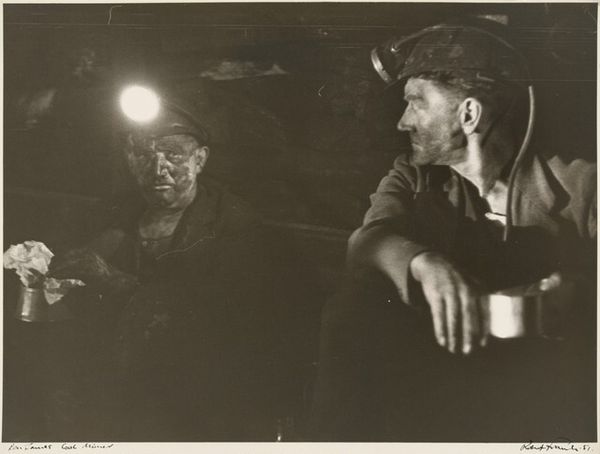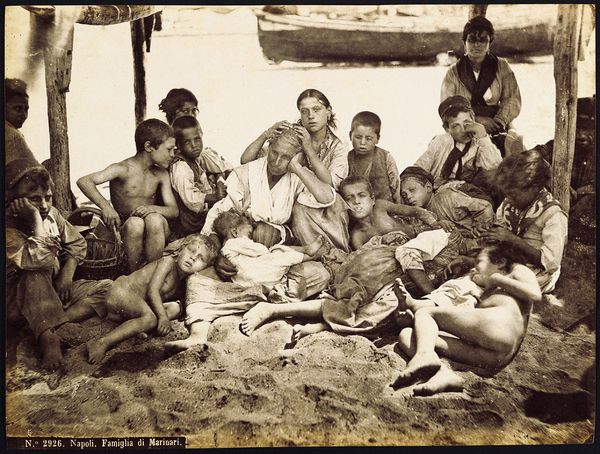
photography, gelatin-silver-print
#
portrait
#
black and white photography
#
black and white format
#
photography
#
black and white theme
#
black and white
#
gelatin-silver-print
#
monochrome photography
#
genre-painting
#
monochrome
#
realism
Dimensions: image: 29.8 x 23 cm (11 3/4 x 9 1/16 in.) mount: 50.1 x 37.5 cm (19 3/4 x 14 3/4 in.)
Copyright: National Gallery of Art: CC0 1.0
Curator: Walker Evans possibly captured this gelatin-silver print titled "Dock Workers, Havana" sometime between 1932 and 1974. Editor: Immediately, I'm struck by the weight of the image. The figures are heavily soiled, and they carry with them this incredible sense of resilience under harsh conditions. It’s a testament to the human spirit, albeit framed within the context of strenuous labor. Curator: Absolutely. It’s crucial to look at this within the political climate of Cuba during this period. Considering the tumultuous nature of the labor force at the time, Evans’s work prompts questions of class struggle and socioeconomic disparities inherent in pre-revolutionary Cuba. It challenges the exoticized view often pushed by external powers. Editor: Exactly. This isn’t a romanticized depiction of Cuban life; it’s a raw, unflinching gaze. I think the straight-on composition is key to conveying this reality. There is no artistry, no trick, just truth-telling. Even their placement against what seems to be a bare wall emphasizes the limited scope and opportunity for social movement in such an economy. Curator: Considering his prior engagements, we can note that his social awareness informs not only how people are represented, but equally important, *who* is deemed worthy of being represented and displayed within museum walls, or, for that matter, being archived for all. It gives a human face to an often faceless underclass within the Caribbean. Editor: Yes. The decision to render this as genre-painting further contextualizes it. He elevates, or some might say accurately represents, everyday working life to the elevated status historically enjoyed by depictions of aristocratic or bourgeois society. What seems initially like just an account then shifts into powerful counter-narrative within Cuban imagery as a whole. Curator: I appreciate how this forces us to consider who gets to decide these narratives. Museums historically were not safe spaces for the depiction of social justice—and continue to be hotly contested spaces today. Evans' piece certainly calls our attention back to such contested territory. Editor: I agree, and thinking about this image in conversation with today’s critical race theory allows us a perspective on the broader issues of visibility and representation that Evans confronts, so to speak, head on. A vital image for continued discourse.
Comments
No comments
Be the first to comment and join the conversation on the ultimate creative platform.
